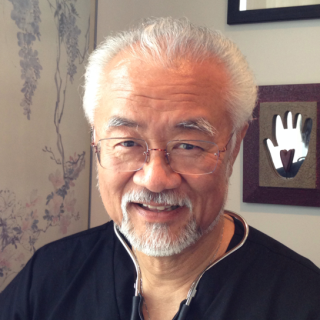
At the just concluded American Heart Association meeting in Philadelphia, the results of a much anticipated and sure to be controversial clinical trial were announced with much handwringing and bold face headlines that will resonate into the foreseeable future. The issue is the appropriate role of diagnostic testing in the assessment of patients with possible significant blockage of their coronary arteries, and what to do with results.
As we know, coronary artery disease is the leading cause of death in developed countries. This results from the buildup of plaque in the coronary arteries and, if significant, results in restricting the blood supply sufficiently enough to cause chest discomfort or a myocardial infarction if the blockage is essentially total. But we distinguish the difference between having the disease in the arteries, technically coronary artery disease, and the presence of a physiologic mismatch between what the heart needs (oxygen and nutrients) from the coronary arteries and what it actually gets, which we recognize as ischemic heart disease.
ISCHEMIA was an international trial with 320 research sites in 37 countries that enrolled about 8,518 patients, but those were winnowed down using coronary computed tomographic angiogram (CTA) to identify and eliminate the patients with “left main” lesions known to benefit from revascularization. The CTA was also used to eliminate patients without significant obstruction in their coronary arteries. It is important to note that this trial sought stable subjects with moderate to severe ischemia detected on stress testing or imaging (stress echo or nuclear imaging). The resultant cohort of 5,179 subjects were then randomized to an invasive angiogram including, if indicated, a revascularization procedure, e.g., percutaneous coronary intervention (PCI) such as angioplasty and stent or coronary bypass surgery plus optimal medical therapy, or to optimal medical therapy (OMT) alone, e.g., anti-platelet drugs, statins, beta-blockers, and other medications deemed necessary by their attending physicians.
Once randomized, the patients were followed for a median of 3.3 years and tracked for a major adverse cardiovascular event, such as a cardiac death, heart attack, hospitalization for ischemic chest pain or heart failure, or a resuscitated cardiac arrest. The goal was to see if there indeed was any difference in the outcomes in these two evenly match groups, revascularized plus OMT vs. OMT alone. There were some protocol modifications lowering the protocol’s entry criteria for ischemia, but these apparently did not alter the outcome of the trial despite concerns from critics of the changes.
The null hypothesis was validated; there was no statistically significant difference in the overall outcomes. The absolute events tended to favor the OMT group for the first two years, but after two years, they tended to favor the revascularized group. One key point is that the all-cause death rate was low (6.5% in the revascularized + OMT, and 6.4% in the OMT alone) in both groups, which reflects well on the outcomes if a patient is aggressively managed to evidence-based standards. One area of notable difference was that symptoms were much less in the revascularized group (about 50% asymptomatic) compared to the medically treated group (about 20% asymptomatic) at the one year mark.
The headlines emanating from the media were predictably bombastic and overreaching, basically saying that invasive interventions were no better than medicines because the outcomes between the groups were not different. And, these results corroborated the results of earlier and also very controversial trials called COURAGE and BARI 2D which also showed no difference between PCI and OMT patients. Some observers have commented that stress testing is unnecessary or overused since treatment made no difference. Let’s put a pin in that.
Here’s what I currently think: if symptoms are suggestive of ischemic heart disease, stress testing is useful to corroborate the likelihood of the diagnosis. If that is the case, especially if the results are very positive/abnormal, a CTA may be useful to rule out left main disease such as used in the ISCHEMIA protocol, and also sort out who does not have significant blockages. If available, fractional flow reserve assessment may add more information on significance of observed coronary lesions, but until more data are available, it is unclear if angiography would be warranted even if flow is compromised. But I suspect fewer invasive coronary angiograms may be performed if the ISCHEMIA results are integrated into future guidelines from the American College of Cardiology, American Heart Association, as well as our esteemed colleagues in Canada, Europe, Asia, and elsewhere. Those will be the guideposts for clinicians and patients in the future, further informed by additionally analyses and data.
Aggressive and optimal medical therapy is then indicated with appropriate evidence-based and guideline-directed cardiovascular disease management strategies.
Whether or not a revascularization procedure is employed may be relegated to a thoughtful discussion between the physician and the patient, as the ISCHEMIA results now confirm earlier studies that major adverse cardiovascular events are not reduced by invasive procedures compared to the optimal and aggressive medical therapies.
The issue of symptom improvement in the revascularization group is an important one, and one that may be glossed over by the payers since they may not want to pay for interventions beyond medications since “it makes no difference” in outcomes. This is when I employ the “unless it’s your mother” rule. The role of health care is to take care of the patient in front of you. If the payers want to play the "makes no difference” card, then the extreme would be to do nothing for anyone as we all die at the end. And then we don’t need pay health insurance companies either. That’s an obviously ridiculous and untenable position, but doctors often face qualitatively similar coverage obstacles when advocating for our patients.
In my estimation, it is imperative that we have continued follow up for outcomes of the ISCHEMIA study population. Given the expense and effort to conduct this trial, it is morally mandatory to ensure there are no late signals favoring one group over another beyond the median 3.3 years, e.g. 5 and 10-year data. This will be confounded by one-way crossovers to revascularization over time, but our biostatisticians and health-economic colleagues will hopefully help us sort that all out if full transparency is demanded.
Dr. Loh is a board-certified internist & subspecialty-certified Cardiac specialist with an emphasis on Preventive Cardiology. He founded & directs the Ventura Heart Institute, which conducts education, research & preventive cardiovascular programs.
Image aurielaki / Shutterstock







